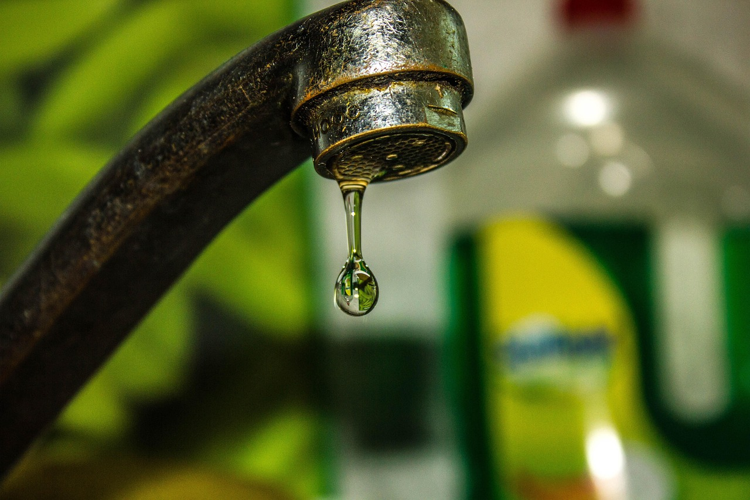Homeowners often underestimate the impact of leaks in their properties, believing that they are mere inconveniences that can be easily ignored. Even small leaks can lead to significant structural damage. Whether from plumbing failures, roof leaks, or foundation issues, water infiltration can compromise a home’s integrity and result in costly repairs. In this exploration, we will discuss essential aspects of leaks, the potential risks they pose, and the importance of proactive measures to prevent extensive damage.

Understanding the Types of Leaks
Leaks can occur in various parts of the home, each type posing unique threats. One of the most common is plumbing leaks. These can originate from old pipes, loose fittings, or malfunctioning fixtures, leading to water pooling within walls, under floors, or in basements.
Another concern is roof leaks, which can stem from damaged shingles, flashing, or worn-out seals. These often go unnoticed until significant damage occurs, such as mold growth or wood rot. Lastly, foundations can crack, leading to seepage during heavy rains or snowmelt, which can undermine the stability of the entire structure.
Signs of Water Damage to Look For
Being vigilant about the signs of water damage can save thousands in repair costs. Homeowners should watch for visible signs such as peeling paint, warped drywall, and soft spots on floors or ceilings. These often indicate underlying moisture issues.
Listening for sounds is equally important, as dripping water or unusual noises from plumbing can signal a malfunction. Unexplained increases in water bills can hint at hidden leaks, urging immediate investigation. Awareness of these indicators allows you to address problems as they arise, preventing extensive damage.
How to Mitigate Risks
Preventing leaks and their potential consequences involves a multi-faceted approach. Regular maintenance of plumbing systems is important, ensuring pipes are in good condition and replacing damaged fittings promptly. Roof inspections should be part of scheduled home maintenance, focusing on the condition of shingles, flashing, and ventilation.
Homeowners should monitor basement and crawlspace humidity and ensure adequate drainage around the foundation. For those unsure about addressing plumbing issues, seeking assistance from professional plumbing services in Pittsburgh, or in your local area, can provide expert guidance and repairs. Such measures fortify a home against the pervasive threat of leaks.
The Importance of Early Detection
Identifying leaks early is crucial in mitigating the extent of the damage. Homeowners should regularly inspect their properties for signs of moisture, such as water stains on walls or ceilings, damp spots on floors, and musty odors in enclosed spaces like basements.
A proactive approach to monitoring plumbing systems includes checking for dripping faucets, running toilets, or wet spots, particularly in areas with high humidity. Tools such as moisture meters can assist in pinpointing hidden leaks. Knowing where to look and acting swiftly can mean the difference between a minor repair and a major renovation.
Structural Implications of Undetected Leaks
When leaks are undetected, the potential consequences include significant structural damage. Wood is particularly susceptible to moisture, and prolonged exposure can lead to dry rot, which weakens beams, joists, and flooring. Metal components may corrode, and foundations may settle unevenly, creating more issues.
Water accumulation promotes mold and mildew, which poses health risks and often necessitates expensive remediation services. Structural engineers often emphasize that such problems are not merely cosmetic; they fundamentally compromise the home's safety and durability. In severe cases, entire sections of a home may need to be rebuilt, driving costs substantially higher.
Understanding Insurance Coverage
Homeowners should familiarize themselves with their insurance policies regarding water damage. Depending on the source of the leak, coverage might vary significantly. Most policies cover sudden, accidental leaks but may exclude damage from gradual wear and tear.
Understanding these nuances can aid in planning for potential repairs and ensuring financial safeguards are in place. Consider discussing additional coverage options with your insurer, particularly for older homes or areas prone to flooding. Knowledge of what is covered reduces the financial burden when significant leaks arise.
The Role of Technology in Leak Detection
New advancements in technology have revolutionized leak detection and prevention. Smart home devices can detect leaks and notify homeowners via mobile apps, allowing for a swift response. Infrared cameras can identify moisture behind walls without invasive measures, pinpointing trouble spots accurately.
Some systems monitor water usage in real-time, alerting homeowners to unusual activity that could indicate leaks. Investing in these technologies can significantly enhance a homeowner’s ability to prevent structural damage caused by leaks, offering peace of mind in an otherwise uncertain situation.
When to Call a Professional
Even diligent homeowners may find themselves in need of assistance regarding leaks. Knowing when to call in experts can prevent further damage and save money in the long run. If leaks occur in difficult-to-reach areas, like behind walls or beneath floors, specialized tools and knowledge are necessary to address the issue effectively.
Health concerns stemming from mold or structural damage warrant quick intervention by professionals, ensuring safety and conformity with building codes. Building a trusted relationship with a reputable plumbing service can provide reliable support for such emergencies.
Preventive Maintenance for Long-Term Protection
One of the most effective ways to reduce the risks associated with leaks is to adopt a consistent preventive maintenance routine. Scheduling annual inspections for plumbing, roofing, and foundation systems helps identify vulnerabilities before they escalate. Homeowners should periodically test shut-off valves, clear gutters, and inspect sump pumps to ensure they function properly during heavy rainfall.
Developing a checklist for seasonal maintenance can keep homeowners organized and aware of potential problem areas. These preventive measures significantly reduce the likelihood of unexpected water damage. Committing to routine maintenance safeguards both the structure of the home and the homeowner’s long-term financial investment.

Leaks may seem minor at first glance, but their impact on a home’s structure can be profound and far-reaching. Understanding the various sources of leaks, recognizing early warning signs, and taking swift action are important steps in protecting your property. By combining vigilant inspections, timely repairs, preventive maintenance, and the strategic use of technology, homeowners can minimize risks and maintain the integrity of their homes for years to come. When issues exceed your expertise, turning to qualified professionals ensures that problems are resolved safely and effectively. Proactive care is the key to preventing structural damage and preserving the value and safety of your home.



(0) comments
We welcome your comments
Log In
Post a comment as Guest
Keep it Clean. Please avoid obscene, vulgar, lewd, racist or sexually-oriented language.
PLEASE TURN OFF YOUR CAPS LOCK.
Don't Threaten. Threats of harming another person will not be tolerated.
Be Truthful. Don't knowingly lie about anyone or anything.
Be Nice. No racism, sexism or any sort of -ism that is degrading to another person.
Be Proactive. Use the 'Report' link on each comment to let us know of abusive posts.
Share with Us. We'd love to hear eyewitness accounts, the history behind an article.